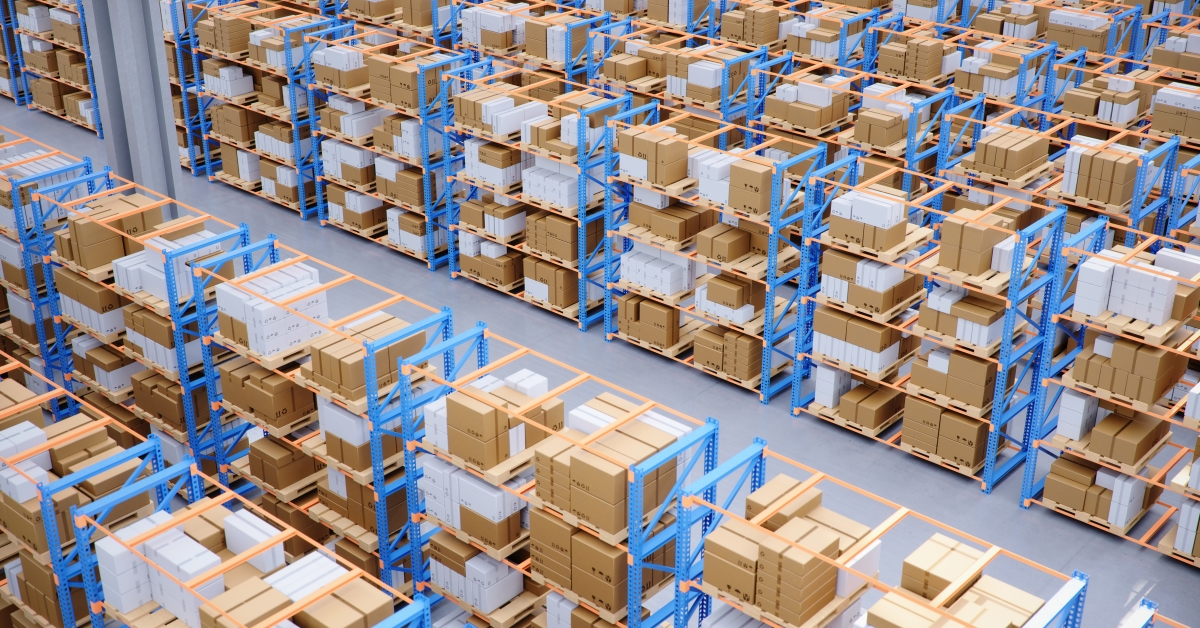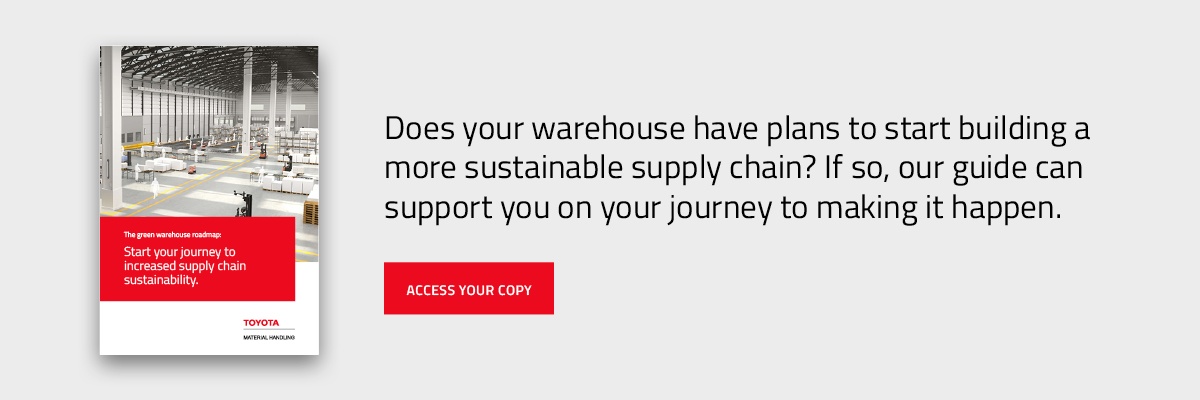To become more sustainable, warehouses need to integrate ethical and environmentally responsible practices into their supply chain. The importance of sustainability in a supply chain extends beyond going green. It offers warehouses many other benefits.
This article will explain these benefits and the actions your warehouse can take to build a sustainable supply chain.
What are the benefits of a sustainable supply chain?
1. Reduced costs.
Introducing more sustainable solutions such as the use of electric forklifts with sustainable fuel sources, eco lighting, solar panelled roofs and better insulation effectively reduces overhead costs as they consume less energy.
A sustainable supply chain is also focused on efficiency and reducing waste, leading to cost savings down the line. By introducing lean principles, warehouses can begin recycling more waste and cutting back on the material used where possible.
Automation has a key role to play too. There are now solutions available to support warehouses to track material usage and make better decisions when using materials more efficiently.
2. Improved reputation.
Consumers, suppliers and other stakeholders are becoming increasingly aware of the importance of sustainability. A recent study found that 66% of consumers consider sustainability when making a purchase decision.
Nowadays, stakeholders align themselves with brands compatible with their values and priorities. With this in mind, warehouses need to focus their efforts on building a sustainable supply chain.
By doing so, they are more likely to win new business, build stronger relationships and ensure business continuity in the future.
3. Better staff productivity and efficiency.
A sustainable supply chain can also increase productivity and efficiency by creating a better working environment for employees.
Businesses that invest in sustainable initiatives foster a positive culture by offering value to society and instilling a sense of belonging to their workforce. With decreased dependence on traditional energy sources, a sustainable warehouse design can increase its efficiency too.
So, you have a better understanding of some of the benefits of building a sustainable supply chain. But how can you cultivate sustainability on your own? Read on to find out more.
What steps do you need to take to build a sustainable supply chain?
There are specific steps your warehouse can take to help you build a sustainable supply chain. These include:
1. Identify sustainability issues in the supply chain.
Before you go any further, you should conduct an audit and analyse your entire supply chain. This will allow you to identify elements that could be improved through sustainable solutions. Several lean production techniques can support you when conducting this analysis. One of these is value stream mapping (VSM).
By reviewing the flow of process steps and information from origin to delivery, you can then detect waste areas and mitigate them through solutions such as adopting a circular supply chain. Learn more about what a circular supply chain is in the next section.
2. Adopt a circular supply chain.
As your warehouse ramps up its sustainability efforts, eliminating waste should be a top priority. To make this happen, we recommend adopting a circular supply chain.
A circular supply chain is where the raw materials used are recycled back into the manufacturing operation. They get to be repurposed for the production of another product. This means very little goes to waste.
3. Work with sustainable suppliers.
Although you can control most of your supply chain, suppliers will explicitly manage some elements.
Therefore, you should work with suppliers who are also committed to sustainability. Research their accreditations and take the time to learn about their sustainability goals.
You may have worked with some of your suppliers for years. They might be in a similar position to you. Becoming more sustainable means embracing change. This is a chance to embrace change together. Make sustainability a regular part of your conversations and, if necessary, share the costs of sustainable improvements.
4. Drive continuous improvement.
A sustainable supply chain is only ever achieved by warehouses with the right attitude that are always willing to adapt to new industry standards.
For this to happen, you should embrace lean techniques such as Kaizen; a strategy focused on continuous improvement by gaining buy-in from everyone in the business. Keep looking for new opportunities to innovate, embrace forward-thinking solutions and do not be afraid to set ambitious targets.
However, it is crucial you have a clear strategy in place before anything else. We have created an insightful guide to help you start building out your sustainability strategy.
Download your copy of the green roadmap here.
We have created this guide to help you learn more about sustainability in warehousing, its benefits and some strategies you can implement to begin building a sustainable supply chain.
Access your copy below.

